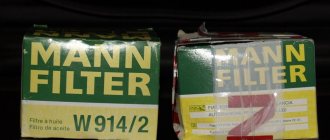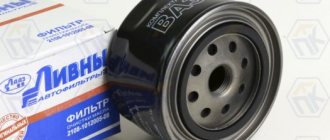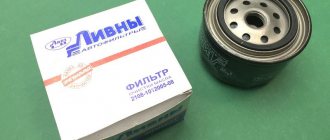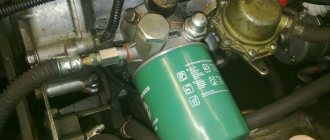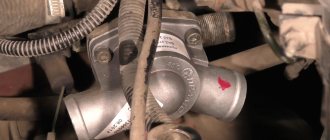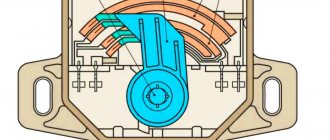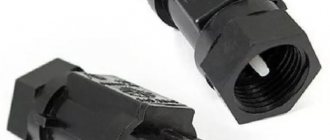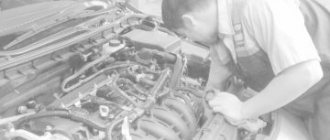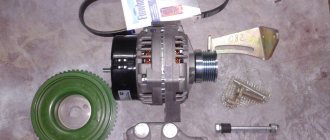The engine of every car needs a lubricant to prevent increased wear of rubbing parts. It is motor oil that reduces their enormous friction force during operation. And oil filters are used to retain foreign parts. Their replacement on Lada Vesta is carried out together with an oil change according to the maintenance schedule.
The need to replace the oil filter and engine lubricant
First of all, it is important to understand that replacing the Lada Vesta oil filter is simply a necessary maintenance step, which ensures that the oil is cleaned of decay and wear products. The oil, in turn, is responsible for the trouble-free operation of the power unit components:
- crankshaft plain bearings;
- engine pistons and cylinders;
- hydraulic gap compensators;
- piston rings.
The list listed above alone demonstrates that the functionality of the motor depends on the quality of the lubricant. Timely change of oil and filter element is as important as replacing the Lada Vesta timing belt .
The filtration process does not cover all mechanical impurities, which, in fact, is not necessary, because small pores will quickly become clogged, reducing the throughput of the device. The filter element has another important task - it retains a certain amount of oil in the lines of the power unit after it stops. The product design uses a drain valve for this purpose, which is a rubber cuff. The loss of elasticity of the rubber damper causes a moment when, when starting the engine, the lubricant pressure does not rise to the operating level within 5-20 seconds. Therefore, timely replacement of the oil filter and oil on a Lada Vesta car is guaranteed to extend the life of the internal combustion engine.
This is interesting: Fiat Alba brake pads: selection, replacement
Design and principle of operation of the part
Sample engines that are used in modern car models include a lot of mechanisms rubbing against each other. Operating in this extreme mode, the mechanisms require high-quality lubricant as motor oil. For the rational operation of the engine and its components, the use of high-quality oil filters and timely replenishment of the oil reservoir with the missing amount of liquid are required.
In order for the car to remain operational for a long time, it is necessary to monitor the condition of the spare part and the level of engine oil. Manufacturers of car parts for Vesta and other models offer a wide range of filters. They may look different, but the products do the same job, they have a single mechanism of action. The part cleans the lubricant, removes dirt and metal particles from engine parts and prevents them from getting back into the operating mechanism.
The filter component of the Lada Vesta car is visually similar to filters of other brands - it looks like a dark glass with a cleaning device in the middle. Despite its apparent simplicity, the part has a complex design.
↑ What tool is needed?
To change the oil and filter on a Lada Vesta car we will need:
- hexagon with a diameter of 8 mm;
- filter puller;
- knob and head for 10;
- 10mm wrench.
In addition to the filter and oil itself, you need to take care of the container where the old used oil will be drained.
Preparatory activities
The set of actions is identical for all variations of Vesta; we will work with the most common version, equipped with a 1.6-liter power plant with 106 horsepower.
Monitoring the oil level should be constant, but if we talk about the manufacturer’s recommendations, then the interval is set at 15 thousand kilometers.
For maximum reliability, the interval can be reduced to 10 thousand. The zero maintenance cycle occurs at the 3 thousand mark.
Preparation involves performing the following actions:
- The car is driven onto an overpass, placed on a lift or over an inspection hole.
- The engine warms up, thanks to which it is possible to achieve the necessary fluidity of the oil.
In addition to fresh oil, you need to prepare some tools:
- socket wrench with a set of sockets (hexagon 8, head 10;
- screwdriver;
- chain puller;
- new oil filter;
- a bucket or other container where you can drain the used composition.
Good non-original filters: articles, price
Specifications (size):
- outer diameter: 84.7 mm;
- screw thread: M20x1.5;
- internal diameter: 61.1 mm.
| Article number (oil filter) | Price in rubles | ||
| H13W01 | PH6811 | W 811/80 | From 430 – 470 |
| C-1016 | TF 24 | LC-331 | From 430 – 470 |
| PF4076 | CMZ11431 | LS489A | From 430 – 470 |
| W811/80 | COF100119S | ADS72101 | From 430 – 470 |
| HU 7001 x | OF 1101 | 451103316 | From 430 – 470 |
| 1ECO076 | H13W01 | OP617 | From 430 – 470 |
| 10498 | E825H D265 | N1310510 | From 430 – 470 |
| C-1016 | PH6811 | DO 324 | From 430 – 470 |
| CMZ11431 | EOF251 | PF4076 | From 430 – 470 |
| OX 351D | ADS72101 | LS489A | From 430 – 470 |
| 10-04-498 | OX 351D | 0 451 103 316 | From 430 – 470 |
| *prices are as of July 2021 |
↑ How to replace the oil filter with your own hands?
The oil should be changed when the engine is not yet cooled down, since hot oil has a lower viscosity, which affects its fluidity and, therefore, drains faster.
First of all, we place the car on an inspection hole or overpass. There should be easy access to the right side of the car, because the oil filter on the Lada Vesta is located closer to this edge.
For easy filling, remove the engine casing and unscrew the filler cap. First you need to get rid of the shield designed to protect the motor from dirt. It is attached to the body with 13 bolts, which should be unscrewed with a 10mm head.
By removing the protection, we will have access to the oil drain and directly to the filter. Using a hexagon we try to unscrew the drain plug. Often, due to the softness of the metal, it breaks, then we use a “gas” wrench, with which we complete the job we started. In this case, the plug becomes unusable and must be replaced.
We safely drain the used oil into a container prepared in advance, with a capacity of at least 5 liters.
When removing, you can damage the wires and the crankshaft position sensor itself, so it is advisable to remove it. To do this, you need to disconnect the wiring harness block from the sensor connector and unscrew it using a 10mm wrench. Then you should carefully unscrew the old filter, as used oil may continue to flow out of it. If this cannot be done by hand, a special puller is used.
Then pour a little oil into the new spare part and tighten it tightly without using any tools. We reconnect the removed sensor, tighten the drain plug and pour new oil at the set level, which should be between the “min” and “max” values.
It is necessary to check for leaks from under the filter or drain plug. If possible, you need to monitor the oil level in the next couple of days, and if necessary, top up to normal. We put the protection in place, tightening all 13 bolts, and the car is ready for use again.
This is interesting: Cabin filter Nissan Beetle: where is it located, replacement
Lada Vesta ➤ splinter › Logbook › TO-0, independent oil change.
The mileage was about 3,000 km.
I decided to do the TO-0 myself, since it’s a bit far to go to the OD. Before the first maintenance, I leave the right to drive on one oil for 15 thousand km to numerous oil specialists, I decided not to risk it. Here I will describe a little how and what. Specialists who change oil with their eyes closed need not read it. But there are also beginners who have not changed the oil themselves. Yes, and there are small subtleties in this matter specifically on Vesta) Rosneft 5w30 service oil was filled from the factory. I decided to fill in Rosneft Premium 5w40
, synthetics. Why Rosneft? Because I don’t want to buy expensive, advertised oil from strange guys with the option that it’s a fake. And the plant recommends Rosneft. And there’s a RN gas station nearby, even a real one. That's where I bought it. Why 5/40? Because in summer the temperature does not drop to +30, and in winter below -30. So it makes no sense for me to pour 0/30, for example. 5/40 will be just right. Why synthetics? Well, many say that for a new engine it is better to use synthetics, it is thinner. And after a hundred thousand, you can pour a half-blue. I bought 4l+1l oil. My crankcase is cast, the transmission is Renault mechanics. So according to the book you need more than 4 liters. It came out to about 2000 rubles.
Drove the car in warm
engine to the pit. If the engine is cold, it must be warmed up to operating temperature. A hot engine drains oil better. You can change it immediately after the trip. I drove the car so that access to the right side (in the direction of travel) was better, since there is a filter there.
It is quite difficult to reach the oil filter from above (but possible), so I decided to remove the protection. More precisely, the factory boot. Using a 10mm socket, I unscrewed the 13 bolts and removed the protection.
Unscrewed the plug from the oil filler neck. Using a 8mm hex, I unscrewed the oil drain plug, hitting it prematurely with a hammer. More precisely, I tried to unscrew it. I tore it off safely and drove another car to get a new one. I bought it from Granta/Kalina-automatic. It seems like 40 rubles. I unscrewed the broken plug with a gas wrench. And don’t blame me for being a manual driver) Then they changed it at my brother’s on Vesta - the same plug was unscrewed almost by hand. Apparently the factory tightens it differently. I placed the cut-off 5L canister under a stream of oil and went for a smoke break. I waited a bit for it to merge. A rather black slurry poured out. Riding on this for another 12,000 km is somehow not very good.
Using a puller from below, I loosened the filter, then unscrewed it by hand. I shit myself in oil, as expected - everything according to the rules, in general)
On the new filter I lubricated the sealing ring with new oil. There is a lot of debate about what is necessary or not, but I lubricated it and poured some oil inside. Screwed it into place. I also screwed in a new drain plug. I didn’t drag out either one or the other too much. Maybe next time it will be easier). Replaced the sensor
with connector. Wipe up any oil drips with a rag.
↑ Where to buy and how much does an oil filter cost?
Lada Vesta is available with two engine options, 1.6 or 1.8 liters. But this does not in any way affect the choice of oil filter.
When assembling this vehicle, a Russian-made Livny brand device is installed. The price of this model was set at 140-150 rubles. But many Lada Vesta car owners are dissatisfied with the quality of this model. In most cases, they are not satisfied with the problem of oil leakage along the rolling circuit.
When passing an official technical inspection, technicians often install an original spare part with catalog number 21080101200582, manufactured by . The cost is about 250 rubles. Based on reviews from people who use Lada Vesta cars, this brand is much better than the Livna, which is installed during assembly.
In addition to the original filters listed above, their analogues are also very popular. The most famous of them:
- MANN W914/2. Manufactured by the German company MANN+HUMMEL. This is one of the most common brands among Russian motorists. The high quality of the paper, the filter impurities, and the proven check valve have allowed us to earn an excellent reputation from the owners of Lada Vesta. There is also additional protection against counterfeiting, consisting of a distinctive inscription on the bottom of the case, which can only be seen under the influence of ultraviolet rays. The cost starts from 180 rubles.
- FRAM PH5827. Are being manufactured. A distinctive feature is that the area of material with which the oil is purified is significantly increased due to the special design of the filter element, located in the shape of an “accordion”. But there is also one minor drawback. When starting the engine, the oil pressure light stops lighting only 2-4 seconds after it starts running. The price is 160 rubles or more.
- NF-1005. The production is carried out by Russian. The main positive feature is the valve design, which prevents the oil level from becoming too low. This can lead to overheating, faster wear and subsequently render the engine inoperable. The market price of this oil filter is about 100 rubles.
Replacing engine oil and filter on Lada Vesta
Like any vehicle, Vesta requires some attention from the owner. In particular, he must change the oil in a timely manner.
We change the oil every 7-8 thousand!
You can find many service centers throughout Russia, but the coverage is still insufficient for residents of all localities to quickly change their oil at a dealer.
However, this process is not too complicated, and therefore suggests the possibility of doing it yourself. Let's look at how to do this.
How to distinguish a fake from an original filter on a Lada Vesta
You can purchase consumables in various places, namely:
- at the car market;
- in a specialized store;
- in online catalogues;
- through intermediaries.
Given the breadth of choice, for an inexperienced owner the risk of purchasing non-original products increases due to insufficient knowledge of unmasking factors.
When selecting consumables, be sure to check the availability of:
- branded cardboard packaging, its integrity;
- holographic protection from the front of the package;
- factory stamp with batch number, date of manufacture, country of origin;
- rubber seal on the inner diameter of the MF.
When purchasing, check for a quality certificate or other documentary materials indicating the origin of the product. If you have any doubts about the product, refuse it.
When is it necessary to replace the MF on a Lada Vesta
- the scheduled period for technical inspection has arrived (20,000 km);
- the presence of a crack, traces of deformation of the body after an impact, a collision with a road obstacle, or an oncoming car;
- after starting the engine, the indicator on the instrument panel does not go out for a long time - the engine oil pressure warning lamp;
- under the bottom of the car in the area where the MF is located, traces of liquid leakage are visible.
Lada Vesta: changing the engine oil and oil filter
We change the oil in the Lada Vesta engine in accordance with the maintenance regulations every 15 thousand km of the vehicle. Illustrated step-by-step instructions will help the owner do this himself.
LADA > Vesta
We install the car on an inspection ditch or overpass. We change the oil with the engine not running, preferably immediately after the trip, before the oil has cooled down.
For convenience, remove the plastic engine casing.
How to properly replace the oil filter?
The first step is to choose engine oil:
- Lada 11189 1.6 l - you will need 3.6 liters of new lubricant;
- Lada 21189 1.6 l - for AMT 3.2 l, for manual - 4.4 l;
- Lada 21179 1.8 l - 4.2 l;
- Lada H4M 1.6 l - 4.3 liters.
List of necessary tools for replacing the oil filter in Lada Vesta:
- new filter unit - original code 2108-0101200-582 or analogues: Salyut, Nevsky, CHAMPION, BOSCH, MANN, MAHLE, etc.;
- container for waste liquid;
- a set of wrenches, including socket and socket wrenches;
- rubber gasket for crankcase drain plug;
- special filter remover;
- hexagon;
- stub;
- rags;
- latex gloves.
The work process of changing motor fluid must be carried out using special technical gloves to prevent burns and direct skin contact with the fluid. It is necessary to change the engine lubricant when the engine is warmed up to operating temperature - this will improve the process of draining old fluid and extend the life of the Lada Vesta engine.
Stage one
Replacing the oil filter on Vesta, as the manufacturer’s regulations state, must begin by draining the engine fluid:
- Remove the plastic engine cover.
- It will be difficult to get to the filter from above, so there is a special dirt shield for the engine compartment located below.
- Clean the oil pan yourself from dust and dirt and use a rag to walk along the drain hole.
- Use a wrench to loosen the drain plug and place a container under the car.
- Drain the used motor lubricant.
- After draining, you need to wipe the plug and the neck of the hole, and then screw it back into place.
Stage two
The first step in the change process is to install filtration:
- To remove the filter, you will need a puller. A puller is a special spare part for removing the filter device. Otherwise, you can unscrew the crankshaft fixation sensor.
- If a puller is not available, it is recommended to use a screwdriver to pierce the unit body and carefully remove the element.
- The element landing site must be cleaned of dirt and dust. You need to pour 150-200 ml of motor lubricant into the new filter and lubricate the O-ring with it.
- Tighten the unit yourself until the ring touches the surface of the cylinder block.
- After adding the filter device, you should fill in new engine fluid recommended by the manufacturer.
- Screw on the filler cap when the oil level reaches the max mark.
- Start the engine for 3-4 minutes - the instrument panel should show a normal level of fluid pressure in the engine.
- Check the bottom for leaks from under the filter plug and drain hole.
- Stop the engine and check the fluid level. The check should show the amount of engine oil in the crankcase. If necessary, the manufacturer recommends adding fluid.
This completes the first independent oil filter replacement on the Lada Vesta. Operation of a vehicle with new filtration is permitted immediately after changing the consumables.
On some Lada Vesta car models, the oil filtration part is located in such a way that the entire work process is transferred to the engine compartment and looks a little different. In many trim levels, the manufacturer has provided a decorative cover that covers the car engine and related parts. To operate, it will need to be removed to gain access to the filter unit.
If the procedure is performed for the first time, then even with the help of a puller it will not be easy to unscrew the housing of the filter device yourself, but all subsequent technical replacements can be performed in the engine compartment. The described instructions for replacing the oil filter, according to the manufacturer’s regulations, are equally relevant for both beginners and more experienced Lada Vesta car owners.
Frequency of replacing the oil filter in Lada Vesta
The oil filter element performs an important function in the car - it cleans the incoming engine oil from chips and contaminants for optimal engine performance. Therefore, you should not neglect the manufacturer’s recommendations regarding the established replacement schedule.
As practice shows, the first replacement of the engine lubricant and filter device, according to the manufacturer’s instructions, is necessary after running in a new car, that is, after 3 thousand kilometers. The changing process is required in order to get rid of the chips that formed from grinding in the parts.
The Lada technical instructions indicate the need to change the filtration every 15 thousand kilometers or once a year, whichever comes first.
Since the operation of the car, as practice shows, often occurs in not the most favorable conditions, the repair period is significantly reduced - to 7,000 - 8,000 km.
You can understand that the Lada Vesta needs to replace the oil filter if at least one of the following symptoms is present:
- intensive consumption of the fuel mixture;
- difficulties when starting the engine for the first time;
- the movement of the car is accompanied by jerks on small inclines;
- spontaneous inhibition;
- Traces of oil remain on the asphalt, which indicates a leak and clogging of the filter.
When to change
In accordance with the manufacturer's regulations, scheduled replacement is every 14,000 km, not including the first maintenance at around 3,000 km.
The box describes the models for which the part is suitable.
In practice, few owners adhere to the specified interval. Reasons for this:
- climatic conditions;
- increased dustiness;
- gas pollution;
- low quality of fuel, motor fluid, and the cleaner itself.
The average interval is 10 – 12 thousand km. The recommendation is for informational purposes only and is not a mandatory norm. If you love your car, you will still listen to the opinion of professionals.
Signs that replacement is needed
- an indicator on the dashboard indicates a malfunction in the engine;
- a mechanical sensor, if present, shows pressure below normal;
- The metal body of the purifier is damaged or deformed. Depressurization or fluid leakage has occurred;
- the scheduled replacement date has arrived;
- individual decision of the car owner about replacement.
Factors affecting replacement time
- quality of motor oil, its class, viscosity coefficient, API marking;
- driving style;
- temperature conditions of use;
- tightness of the cooling system, integrity of the cylinder head gasket;
- quality of manufacture of the purifier.
The final stage of the process
Whatever types and options of motor oil are offered by car market sellers, your attention should be focused directly on the product that the manufacturer recommends. If you read the instruction manual, you can find out what is poured from the factory. The manufacturer recommends filling Lada Vesta only with synthetic oils produced by Lukoil and Rosneft. However, at the time of purchase, you should pay attention not only to the brand, but also to the specification.
After the required number of liters of oil appears in the Lada Vesta engine, the tank must be screwed on with the filler cap. After this, it is advisable to activate the power unit, allowing it to run for about 5 minutes. We should not forget about checking the oil level, which is carried out using a dipstick.
In this case, you should check the indicators on the dashboard: the indicator that lights up, which “indicates” the engine lubrication pressure, should go out. Then you need to clean the drain hole from drips. If everything is done correctly, the engine can be deactivated and allowed to stand for 10 minutes, which will allow the lubricant to drain into the crankcase. When checking the engine lubricant level, you need to make sure that it reaches the edge of the mesh pattern. If it is lower, the substance should be added.
Step-by-step replacement process
Preparatory stage, necessary tools:
- chain puller - key;
- head at “10”;
- hexagons on “8”, “17”;
- new oil purifier;
- rags;
- empty container for draining waste;
- synthetic based motor oil;
- additional lighting if daylight is not enough.
Replacement algorithm
- We install the car within the perimeter of the repair area, provide safety measures, and secure the rear row of wheels with wheel chocks.
- Warm up the engine to operating temperature and turn it off.
- We remove the metal protection from under the bottom and unscrew the 13 screws around the perimeter. Subsequently, we clean the plate from dirt and waste products.
- Unscrew the drain plug with an “8” hexagon and grind the waste oil into a container. Only 4.4 liters for manual transmission and 3.8 liters for automatic transmission. Screw the plug.
- Using a chain puller, twist the cleaner and wipe the perimeter from oil and dirt.
- Pour 100 - 150 ml of oil into the new filter and install the cleaner in its original place. Tighten moderately, without excess.
- Fill the filler neck of the valve cover with oil at a level of 4.4 or 3.8 liters, depending on the type of pre-installed gearbox.
- We start the engine, the indicator on the dashboard should go out.
- We check for drips and lubricant leaks. We make a control measurement of the level.
Preparing for replacement
To carry out oil change work, the cars should be driven onto an overpass or use a pit. This will allow easy access to the components of the oil system, which includes the filter and oil tank.
You need to prepare the following:
- Hexagon, for unscrewing the drain plug;
- Special device for removing the filter;
- Container for draining waste;
- New filter.
It is advisable to change the filter at every oil change, since the main amount of dirt accumulates in it.
Filter life
The service life of an oil cleaner greatly depends on the operating conditions of the vehicle. Accelerated clogging of the filter element is greatly influenced by:
- climatic conditions and weather;
- dust and gas levels;
- quality of fuel and lubricants;
- condition of piston rings, oil valve caps and other engine parts.
When the piston rings are severely worn, gases from the cylinder break into the crankcase and change the composition of the oil. The result is substances that accelerate filter clogging.
If the valve stem seals are worn out, the oil enters the cylinder and burns there. The engine's consumption of lubricants increases, and substances are formed that contaminate the filter element.
The service life is greatly influenced by the quality of the cleaner itself. It is better to buy original spare parts. They are a little more expensive, but this is compensated by longer service life and reliability.
DSC_(Copy)
Unscrew and remove the engine oil filler cap.
Unscrew and remove the engine oil filler cap.
There is no access to the oil filter from above, so to replace the filter from below it is necessary to remove the mudguard of the engine compartment.
Replacement procedure
Changing the oil and oil filter of Lada Vesta is a simple operation. If you wish, you can do it yourself, spending 15 minutes.
Required Tools
To replace the filter element, it must first be removed. This can be quite difficult. Due to the high engine temperature, the gasket sometimes sticks.
To unscrew the oil filter on a Vesta, it is most correct to use special spanners and sockets. If they are unavailable, you can use belt or chain pullers, which can be successfully replaced with a rope or belt with a lever. As a last resort, use a screwdriver and a hammer. You need to pierce the housing with a screwdriver closer to the top, and then use it as a lever.
Typically, replacing a filter coincides with changing engine oil, so you need to immediately prepare the required amount and a container for draining the used oil.
Gloves to protect your hands and rags to clean engine parts from oil residues and dirt will not be superfluous.
How to remove the old filter
To remove the Lada Vesta 1.6 oil filter, you need to do the following:
- install Vesta on an inspection hole, overpass or lift and secure it;
- warm up the engine and turn off;
- unscrew 13 screws and remove the metal engine protection;
- unscrew the drain plug and drain the old oil into a container, screw the plug.
All that remains is to unscrew the filter and wipe the seat from oil and dirt.
How to install a new one
Before installing a new filter element, pour 100-150 g of clean oil into it, and then screw it into place without excessive force.
After this, reinstall the engine protection and fill the crankcase with new oil.
Start the engine. The indicator light should go out.
Change of oil
It is better to change the lubricant when the engine is warm - liquid hot oil drains faster and with almost no residue.
The car must be lifted with a car lift (after opening the hood and removing the cap from the oil filler neck) or installed on an overpass or installation pit.
The configuration of the crankcase protection provides access to the drain neck to drain the old oil, but replacing the oil filter is not possible, so the protection must be removed by unscrewing the 13 bolts that secure it to the housing with a 10mm wrench.
It is better to put the bolts in a can of gasoline for cleaning and subsequent lubrication before installing them in place.
After completely dismantling the protection, you need to unscrew the drain plug with an 8-point hexagon, but not immediately all the way - the last couple of turns are done by lifting the container for old oil to it so that the stream does not go past.
The Lada Vesta with a robotic transmission has a drain plug of a different size, and the crankcase has a different design.
During the last turns of the plug, when removing it, precautions must be taken to avoid getting burned by the hot oil jet.
Having installed the tub on the floor in place, they begin to remove the old oil filter. Next to the filter there is a crankshaft sensor, which, in order to avoid damage when removing the filter, must be removed with a 10mm spanner, having first disconnected the plug with the wiring from it.
Brief characteristics of filters
- Mann W914/2: German manufacturer, one of the main suppliers of consumables for Lada, VAZ. Good quality, affordable price, wide range for different models, but a large number of fakes;
- FRAMPH5822: Product of Sogefi Aftermarket. The cleaning element inside the structure is located in the form of an accordion, which improves cleaning and increases throughput. If there is insufficient pressure in the system, the warning indicator on the dashboard lights up;
- NF-1005: domestic. Not a bad budget option. There are no particular advantages or disadvantages.
For Lada Vesta 1.8 and Lada Vesta 1.6, the filters are identical in size and parameters. The engine displacement configuration has no effect on the design of the oil purifier.
What kind of oil filter is on the Lada Vesta: the factory (original) filter is of poor quality, does not hold pressure well, depressurization and oil leakage often occur. Many car enthusiasts install foreign analogues instead of the standard one.
Technical specifications:
- diameter (external / internal): 93 / 62 mm;
- pressure when opening the intake valve: 1.2 bar;
- thread diameter: 16 inches or ¾.
Cost of service in auto repair shops
As a rule, replacing the MF in auto repair shops is an inexpensive procedure, regardless of the make of the car. The final cost of the service depends on the type of brand, region, prestige of the auto repair shop and other parameters.
In general, the oil filter for the Lada Vesta is an element that is necessary to perform high-quality cleaning of the engine system from metal shavings with waste products, contaminants, and impurities that reduce pressure, viscosity and oil quality. The consumable has its own unique design features and long service life.
DSC_(Copy)
If your car has an AMT, then the engine oil pan plug is made with a 17mm hex key.
If your car has an AMT, then the engine oil pan plug is made with a 17mm hex key.
Attention! Be careful - the oil is hot and harsh on the skin.
Drain the oil until it begins to drip from the drain hole. After wiping the plug and removing any remaining dirt from its thread, we wrap the plug in place. We remove oil leaks from the engine oil pan. We place a container for used oil in the area where the oil filter is located. In order not to damage the sensor wiring harness and the crankshaft position sensor itself...
↑ Procedure for replacing the filter
- Warm up the machine to drain the oil better.
- Place the car on a pit to gain access to the filter.
- Unscrew the engine compartment filler cap.
- Disconnect the wiring harness and crankshaft position sensor (optional).
- Unscrew the drain plug.
- Drain dirty, used oil.
- Unscrew the oil filter and replace it with a new one.
- Tighten the plug, connect the sensor and fill with clean oil to the required level.
Preparing tools and supplies
Naturally, at the same time as changing the filter element, the oil is also changed, otherwise it would instantly become dirty. But for different modifications of Lada Vesta, different volumes will be required to fill the lubrication system:
- 1.6 l. (11189) - 3.6 l. oils;
- 1.6 l. (21189) - 4.4 l. for manual transmission, 3.2 l. for automatic transmission;
- 1.8 l. (21179) - 4.2 l.;
- 1.6 l. N4M - 4.3 l.
The work process itself must be performed with protective gloves, since we are talking about a chemically active compound. Before replacement, the car engine is warmed up - this allows you to better get rid of the remaining old oil and better clean the entire system as a whole. Accordingly, this will extend the life of the car engine.
The following is a complete list of the necessary tools and consumables that will be needed when performing the work:
- new filter element (either original or analogues from trusted manufacturers);
- container into which the waste liquid will be drained;
- hex wrench;
- set of keys with socket and cap included;
- a special puller key for unscrewing the filter element;
- stub;
- several dry rags;
- protective gloves or gloves.
Replacement frequency, what oil to fill
According to the manufacturer's regulations, engine oil service changes are carried out after 15,000 kilometers or at intervals of 1 year. But many motorists consider this interval to be very high, recommending that it be reduced taking into account operating conditions.
At the factory, Lada Vesta models are filled with oil from different suppliers. But most often it is Lukoil Genesis Armortech 5W40 or Rosneft Maximum Service 5W-30. For more accurate information about what is poured into your car from the factory, you should contact the feedback system of PJSC AVTOVAZ. When applying, you must indicate the year and month of manufacture of the car.
If you follow the manufacturer's recommendations, then on new cars you must use Rosneft Premium 5W-40 synthetic oil. And for cars with high mileage, switch to semi-synthetic Rosneft Maximum 5W-40. By the way, about the recommendation for filling Rosneft, there is an inscription on the filler neck located on the engine.
Another option that the manufacturer supports is the official Lada Ultra 5W-40 product. It is bottled by Lukoil, and it is positioned as synthetic, although the label says “Synthetic technologies”. Because of this inconspicuous slogan, one has to wonder if it is actually synthetic?
There is a category of people who will never fill up with oil from a domestic manufacturer. Everyone has their own reasons and arguments for this. Having conducted tests among Western manufacturers, fans of this model speak very highly of Elf Evolution 900 NF 5W-40.
How much oil is in the engine lubrication system, volume table
| Model | Engine capacity | Motor marking | How many liters of oil are in the system | Original oil / factory filled |
| Lada Vesta | gasoline 1.8 | VAZ-21179 | 4.1 | Rosneft Premium 5W-40 / Lada Ultra 5W-40 |
| gasoline 1.6 | VAZ-21129 | 4.1 | ||
| * If the gearbox is AMT, then 3.0 liters are needed to fill | ||||
DSC_(Copy)
...disconnect the harness block from the sensor connector and move the wiring harness away from the filter.
...disconnect the harness block from the sensor connector and move the wiring harness away from the filter.
Next, you can use different types of pullers to unscrew the filter, but due to the extremely limited space, it is better to remove the crankshaft position sensor.
DSC_(Copy)
...and remove the oil filter.
...and remove the oil filter.
If there is no puller, we pierce the filter housing with a screwdriver (closer to the bottom, so as not to damage the engine fitting) and unscrew the filter, using the screwdriver as a lever. We clean the filter seat on the cylinder block from dirt and oil drips. Fill the filter with new engine oil to approximately half the filter volume and apply a thin layer of oil to the filter O-ring. We wrap the oil filter by hand until the sealing ring comes into contact with the cylinder block. Turn the filter another 3/4 turn to seal the connection. Pour 4.4 liters of oil into the engine through the oil filler neck.
Attention! If your car is equipped with AMT, then the engine lubrication system capacity is approximately 3.2 liters.
Replacing engine oil in the power unit of a Lada Vesta car
If a motorist does not know how to change the oil in a domestic Lada Vesta car, he should start by removing the plastic that is located at the top of the engine. Then you need to remove the cap from the oil filler neck, for convenience, remove the plastic shield that covers the lower part of the engine, protecting it from dirt and dust. This structural element is attached to the unit using 13 bolts, which are easiest to remove with a key with a “10” head.
Changing the oil in the Lada Vesta continues by cleaning the oil pan, especially in the area where the plug is located that holds the engine lubricant in the tank. The motorist must remove the plug using the hexagon on “8”. You need to get rid of the shield in order to simplify your task.
The waste oil container should be located under the bottom of the car before you remove the drain plug from the Lada Vesta engine. It is preferable to use an old canister or something similar with a volume of 5 liters. Some specialists, before unscrewing the drain plug, first put on gloves, which helps protect the bare skin of their hands from hot engine lubricant. The plug located on the drain hole of the Lada Vesta engine can be removed using a hexagon on “8”.
It will take about 10 - 15 minutes to drain the waste; you should not rush, you need to wait until the substance is completely released. While the oil is not dripping, but flowing from the tank, you should start cleaning the drain plug. When replacing consumable lubricant, it is cleaned with a dry cloth. You should remove dirt and residue from the threads, then return the plug to its original place, getting rid of all oil stains that have appeared on the surface of the crankcase. You can continue changing the oil by changing the old filter; the waste container is placed where the element to be replaced is located. It is important to remember to disconnect the wiring harness that comes from the crankshaft sensor.
When working with other parts, it should be handled with extreme care to avoid the possibility of damage. In this case, there is no point in dismantling the entire sensor, however, if it interferes with an amateur mechanic, it can be put aside for a while. Having a wrench with a “10” bit will help simplify the process. As soon as this structural element is removed, the motorist will need a chain puller, which will make tightening the filter more flexible. Then you should slowly and carefully unscrew the system element and remove it.
Engine oil for the Lada Vesta should be poured in a small amount into the new filter; it needs to be used to treat the sealing ring. As a result, all that remains is to clean the seat with a rag before screwing, removing traces of dirt and dust. As soon as the new filter appears on the tank, you need to tighten it so that it fits snugly against the o-ring and the cylinder block. Do not forget that it must additionally be turned 3/4 of a turn. Having completed the instructions described above, you can fill the Lada Vesta engine with 4.4 liters of oil.
